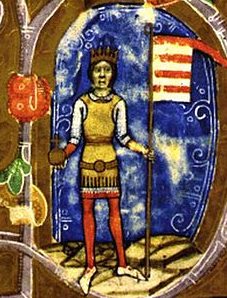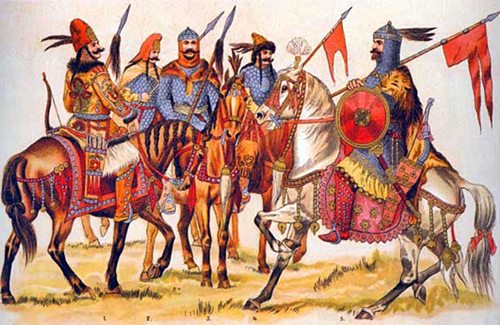
Battle of Sirmium(Zemun) |
year: 11678 July 1167 |
| A Byzantine victory against Hungarians | ★ ★ ★ ★ ★ |
|
enemy: Hungarians
|
location: Close to Sirmium in Pannonia, modern-day Sremska Mitrovica
|
accuracy:
●●●●●
|
|
battle type: Pitched Battle |
war: Byzantine-Hungarian war |
modern country:
Serbia |
| ▼ The Byzantines(emperor: Manuel I Komnenos) | ▼ The Enemies | |
| Commander: | Andronikos Kontostephanos | Dénes, count of Bács |
| Forces: | 15,000 | 15,000 |
| Losses: | Unknown | 800 captured, thousands killed |
| Background story: |
From the mid 11th century, the Kingdom of Hungary had been expanding its territory and influence southwards, with a view to annexing the regions of Dalmatia and Croatia. This, and Hungarian alliances with the Serbian principalities, was the cause of tension with the Byzantine Empire. Friction and outbreaks of open warfare between the Byzantines and Hungarians reached a peak in the 1150s and 1160s. Bela III in a medieval manuscrpipt Since he was also the heir to the Hungarian throne, a union between the two states was a distinct possibility. But in 1167, King Stephen refused to give Manuel control of the former Byzantine territories allocated to Béla-Alexios as his appanage; this directly led to war. In 1167, bad health prevented Manuel from leading a campaign in person, therefore he appointed his nephew Andronikos Kontostephanos, the Megas Doux, to the command of his field army. |
The Battle: |
 Magyar horsemen Unusually, Kontostephanos also had the emperor's bodyguard unit (the oikeoi) under his command. The left wing was composed of regular Byzantine and allied units arrayed in four brigades (taxiarchies) under Demetrios and George Branas, Tatikios Aspietes and Kogh Vasil. On the right – the third division on the march – were placed the elite Byzantine units and German mercenaries, together with some Turkish units. This division was commanded by the chartoularios Andronikos Lampardas and, probably, John Kontostephanos the brother of the megas doux. Three taxiarchies of infantry and archers, with a number of heavily armoured Turks (probably also infantry), were drawn up behind the center in reserve. The Hungarian commander, Dénes, count of Bács (called Dionysios in Byzantine sources), drew his army, which included German allies, up in three divisions in a single broad battle line. Choniates describes the Hungarian army as being composed of knights, archers and light infantry. Contemporary Hungarian armies often lacked infantry and Byzantine sources possibly referred to servants and other camp followers as infantry. The soldiers of the front rank of the Hungarian cavalry are described as being heavily armoured, and mounted on armoured horses. The battle commenced with the Byzantine horse archers moving forward to skirmish with, and harry, the opposing lines and thereby goad them into mounting a charge, before which they were to retire. This was successful, and the whole Hungarian line surged forward. The Byzantine left wing, with the exception of the brigades led by Kogh Vasil and Tatikios, was immediately pushed back and broke, possibly in feigned flight, towards the river, where it quickly reformed. In the centre and on the Byzantine right, the Hungarian charge was held. The Byzantine right then counter-charged, and at the same time the regrouped Byzantine left-wing units also re-entered the conflict, attacking the Hungarians who were pinned by the two taxiarchies which had not withdrawn. Andronikos Lampardas then led an attack on the troops around the Hungarian commander and brought them to a halt; a deadly melee ensued with the Byzantine heavy cavalry resorting to the use of their fearsome iron maces. The battle had reached a decisive point. Kontostephanos, recognising the crisis of the battle, now deployed his remaining reserves. He counter-attacked in the centre and ordered forward the infantry along the whole front, driving the Hungarian forces back. The enemy divisions then began to break up in disorder and the whole Hungarian army turned to flight. Many of the fleeing Hungarians were killed or captured by a Byzantine flotilla operating in the river that they needed to cross to get to safety. Five senior Hungarian commanders with the title were captured, along with 800 other soldiers. Over two thousand armours were taken from the dead and countless helmets, shields and swords. |
Aftermath: |
| The Hungarians sued for peace on Byzantine terms and recognised the empire’s control over Bosnia, Dalmatia, Croatia south of the Krka River as well as the Fruška Gora. They also agreed to provide hostages and pay a tribute. |
|
|
